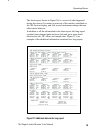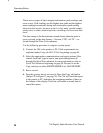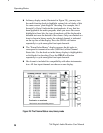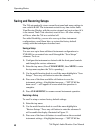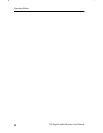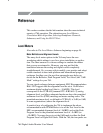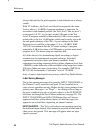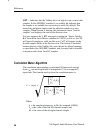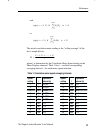
764 Digital Audio Monitor User Manual
43
Reference
This section contains detailed information about the more technical
aspects of 764 operation. The subsections are: Level Meters,
Correlation Meter Algorithm, Selecting Headphone Channels,
Submenus, and Using the RS-232 Port.
Level Meters
Also refer to The Level Meters Submenu beginning on page 48.
Meter Ballistics and Alignment Levels
The many level meter options in the 764 may leave the user
wondering which settings to use for a given installation or applica-
tion. The short answer is to choose settings to emulate the meters
that you are accustomed to. However, you may not find the
translation between the analog and digital worlds completely
straightforward. Or, you may wish to modify your practice and adopt
certain standards to ease inter-platform and international program
exchange. In either case, the next few paragraphs may help you
decide on the Ballistics, Peak Program Level, Test Level, and “0dB
Mark” settings for your 764.
To ease signal exchange between equipment, EBU Recommendation
R68–1992 suggests that the alignment level be set at 18 dB below
maximum digital coding level (that is, –18 dBFS). This level
corresponds to the CCIR 645 [renamed ITU–R BS.645–2] analog
alignment level, and allows adequate headroom above the permitted
maximum level for (PPM) metering and meter-reading errors. The
permitted maximum level, as defined in CCIR 645, is 9 dB (or 8 dB,
in some organizations) above the alignment level.
A practical way of configuring the 764 to implement the above
recommendation with PPM ballistics is to set the Test Level to the
EBU-recommended alignment level of–18dBFS, and set the Peak
Program Level to the permitted maximum level of –9 dBFS (or
–10 dBFS). You may choose to set the 0 dB mark to either the Peak
Program Level or Digital Full Scale. With the 764, the true peaks are



